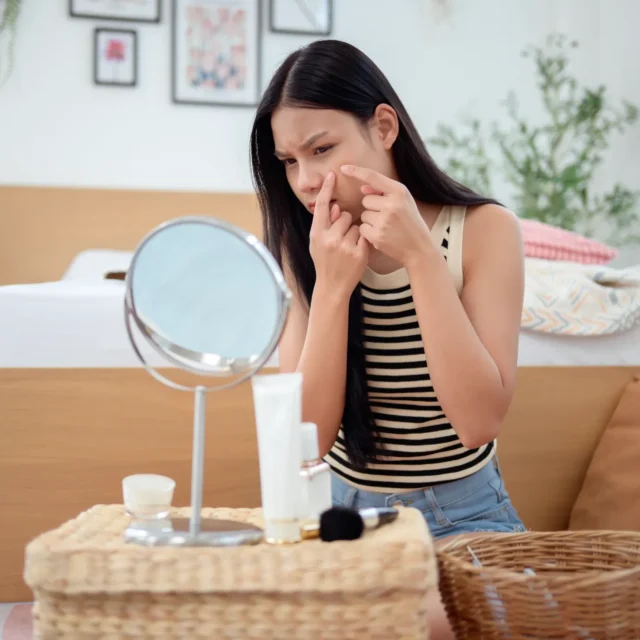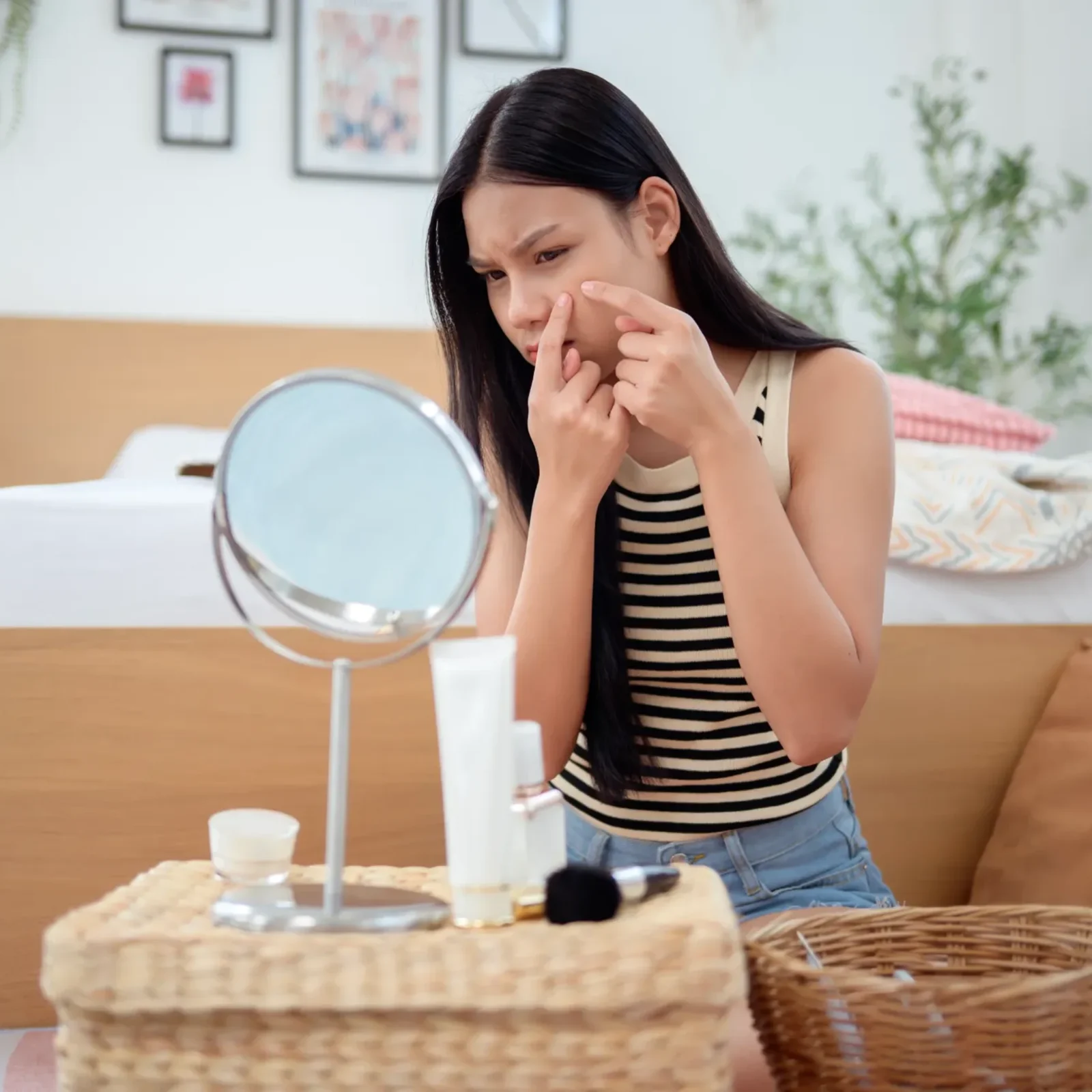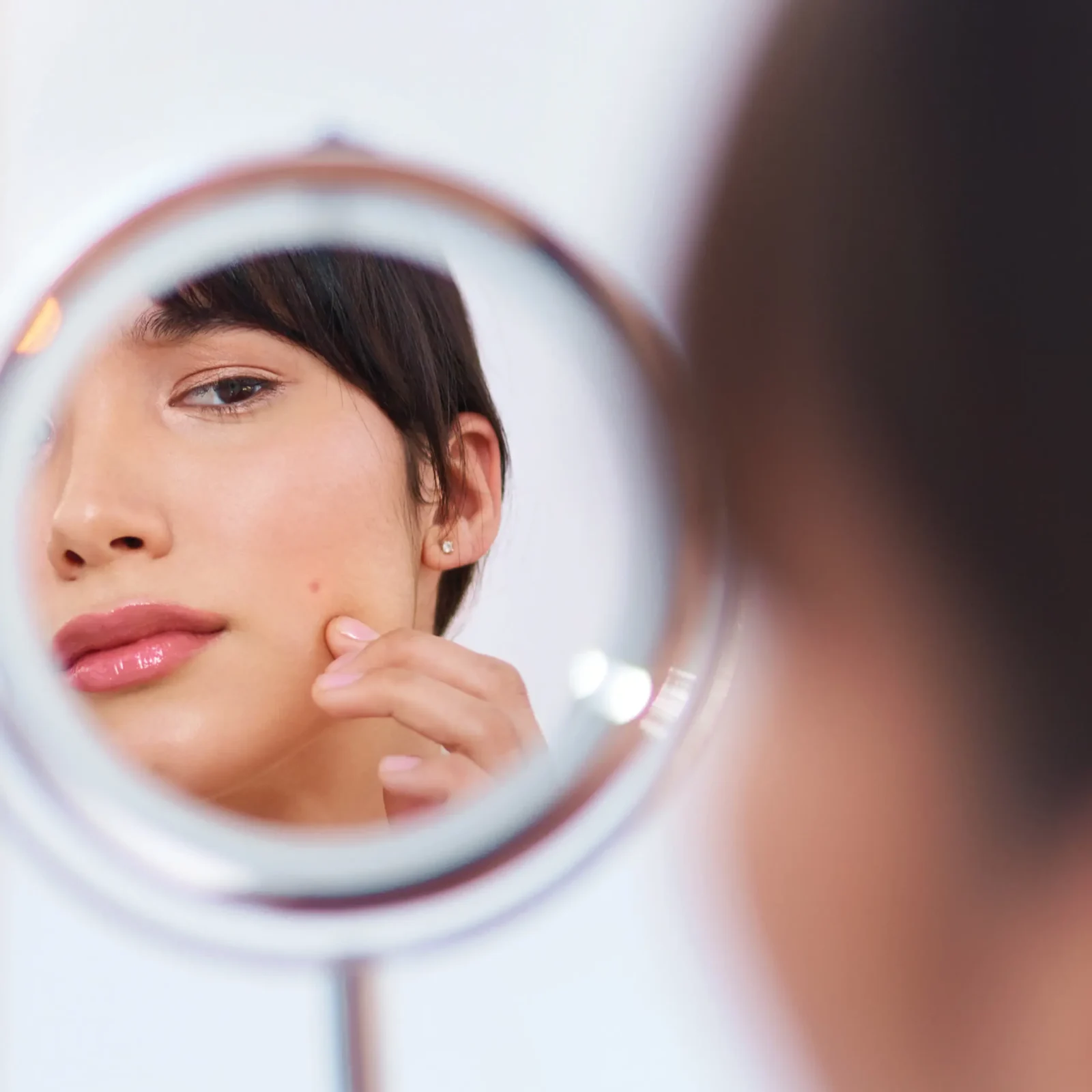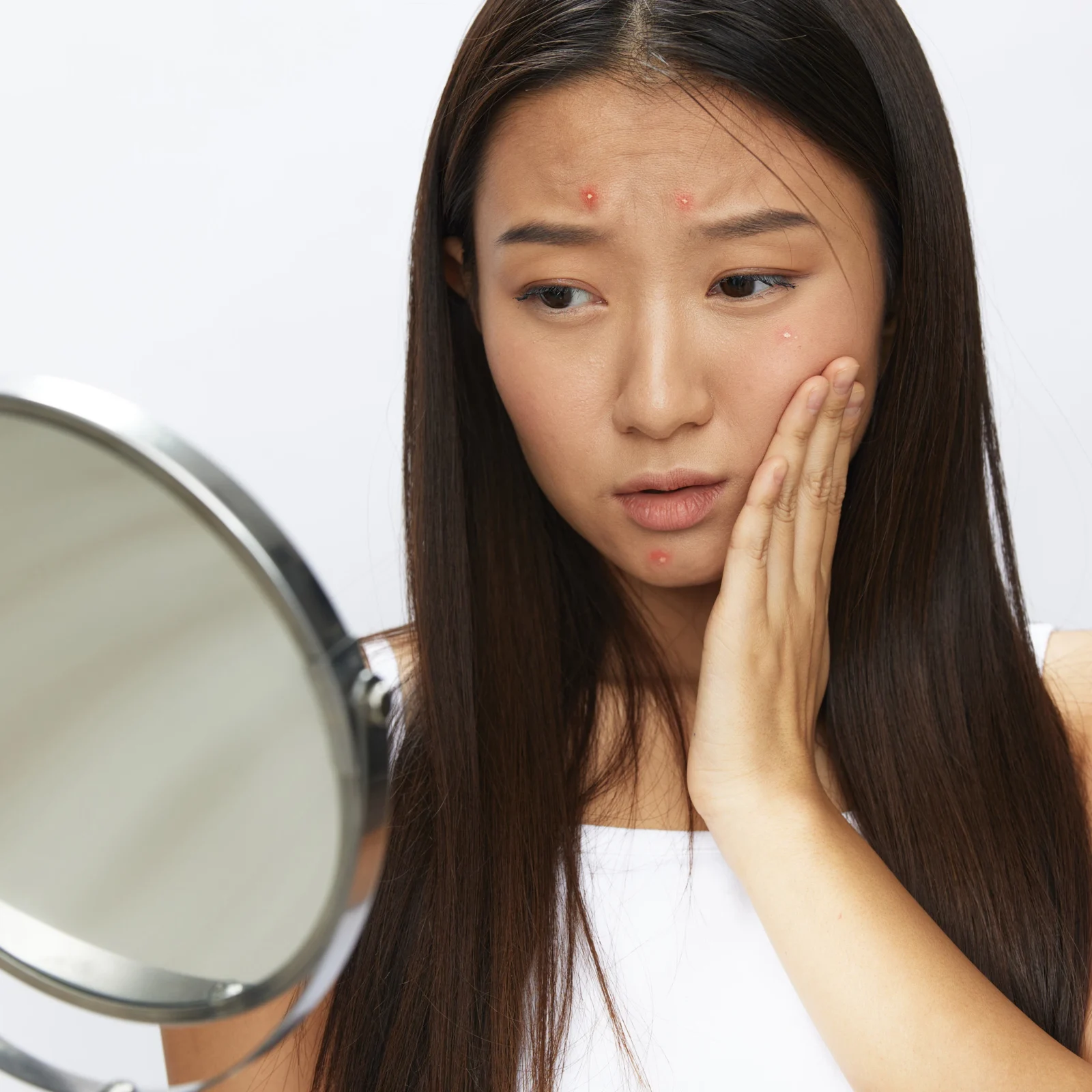How to Get Rid of Cystic Acne Once and For All, According to Dermatologists
These are the most effective ways to treat cystic breakouts without a cortisone shot.
By Rebecca Dancer, Leah Prinzivalli and Lia Cruz
As far as pimples go, those deep, cystic acne flare-ups are probably the most emotionally and physically taxing. If the brutal bumps had a theme song, it’d be the one from Jaws—and it’d start playing the moment you feel the telltale dull pain that signifies the arrival of a pimple under the skin.
Unlike whiteheads and blackheads, which eventually poke through the surface of your skin, cystic acne remains dormant, where it forms a minor mountain and then sits, stubbornly, for days or weeks. Aside from how little surface area those suckers tend to cover, the pain they cause makes them impossible to ignore. Press on one and it reverberates throughout your entire face.
According to board-certified dermatologist Dr. Katrina Reyes in Pasig City, Philippines, 80 percent of people worldwide will be affected by acne at one point in their life, and it is one of the top chronic skin diseases seen by dermatologists.
Since cystic acne can be more challenging to clear than other types of acne, we suggest booking an appointment with your board-certified dermatologist to create a customized treatment plan or to inject and send any current cysts back to hell where they came from (more on that option, below). While you’re waiting for advice from your personal doctor, these cystic acne tips, product recommendations, and sample skin-care routines from expert dermatologists can help.
Meet the experts:
Katrina Angela Z. Reyes, MD, FPDS, FPADSFI, MBA is a board-certified dermatologist practicing at Refinity Dermatology and Laser Clinic in Pasig City.
Joshua Zeichner, MD, is a board-certified dermatologist and director of cosmetic and clinical research at Mount Sinai Medical Center in New York City.
Michael I. Jacobs, MD, is a board-certified dermatologist and associate professor of Dermatology at Weill Cornell Medical College.
Brendan Camp, MD, is a board-certified dermatologist who practices at MDCS Dermatology in New York City.
Dr. Jeannette Graf, MD, is a board-certified dermatologist and assistant clinical professor of Dermatology at Mount Sinai School of Medicine.
Leyda Bowes, MD, is a Miami-based board-certified dermatologist.
Ife Rodney, MD, is a Maryland-based board-certified dermatologist.
In this story:
Does drinking water help with cystic acne?
Which products help treat cystic acne?
How long does cystic acne take to go away?
What is cystic acne?
While pimples come in many shapes, sizes, and forms, cystic acne is considered to be the most severe type of acne, according to Joshua Zeichner, MD, board-certified dermatologist and director of cosmetic and clinical research at Mount Sinai Medical Center in New York City. It’s characterized by the development of “tender, inflammatory nodules underneath the skin.”
You might have heard cystic acne breakouts referred to as blind pimples. They often happen along the chin, but can also emerge elsewhere on the face and even on the arms or back. They typically show up again and again in the same location, often based on your menstrual cycle. Unless you get treated, your first chin cyst will likely not be your last.
What causes cystic acne?
According to Sheila Farhang, MD, a board-certified dermatologist in Tucson, cystic acne is often caused by food triggers, stress, and hormones. Though it’s challenging to pinpoint exactly what causes acne on an individual basis, it’s unlikely that diet is the sole cause of severe acne, but according to Dr. Zeichner, certain foods “have been associated with the worsening of acne.” Those foods include skim milk, whey protein, vitamin B12 supplements, and foods that are high in sugar.
Lifestyle changes, like switching up your diet and reducing stress, can help clear skin. “The same hormones that prepare our bodies to deal with stressful situations also push our oil glands into overdrive,” which can cause breakouts, says Dr. Zeichner.
In addition, androgen hormones like testosterone also stimulate oil glands. “Because hormone levels go up and down during one’s menstrual cycle, acne may flare around the time of the period,” he says.
Can I pop cystic acne?
It’s extremely rare for dermatologists to give the go-ahead to pop any type of pimple. When it comes to cystic acne, not a single dermatologist we spoke with recommended doing so. “You increase your risk of infection and scarring,” says Michael I. Jacobs, MD, a board-certified dermatologist and associate professor of Dermatology at Weill Cornell Medical College. If you’re hoping to reduce the pain radiating from the cyst, Dr. Jacobs recommends gently pressing a warm, damp towel to the area a few times a day to help bring down inflammation.
How do you treat cystic acne?
Cystic acne is challenging to treat, and dermatologists typically recommend a combination of oral and topical prescriptions and lifestyle changes that we wish came in a prescription form, such as reducing stress. In short: Get thee to a dermatologist’s office, stat, as your typical acne skin-care routine might not cut it when it comes to treating cystic acne at home.
“Usually, people run to their dermatologist’s office for a quick cortisone injection to dry up those monsters within hours,” says Rachel Nazarian, MD, a board-certified dermatologist in New York City. But not everyone has the time (or money) to pop into a dermatologist’s office the moment you feel one coming on, and ad hoc injections won’t help treat or cure your cystic acne in the long term.
For Katrina Reyes, MD, a board-certified dermatologist in Pasig City, topical treatments may not be enough for cystic acne. Instead, she recommends systemic treatments, which treat the entire body and not only the affected area. These sorts of treatments vary depending on the severity of the case and the patient’s medical history.
Systemic treatments include oral antibiotics such as tetracyclines, which she prescribes together with topical treatments. “We usually prescribe them for about 12 weeks, because we use them more for their anti-inflammatory effect, rather than their antibiotic effect,” she explains. Other systemic treatments include oral retinoids (isotretinoin) and hormonal medications, including some types of oral contraceptives and spironolactone. These medications can only be accessed with a prescription from a board-certified dermatologist—and only after a proper examination. Dr. Reyes also adds that a non-irritating skin care regimen consisting of soapless cleansers, sunscreens, and lightweight humectants is a must.
In terms of over-the-counter treatments, Dr. Zeichner says the best way to treat acne is to use “different ingredients that work differently and complement each other.” He recommends a two-pronged ingredient approach, focusing on salicylic acid and benzoyl peroxide. To prevent irritation when using the latter, make sure you prime the skin with a light moisturizer first, he says, then spot-treat the cyst with a super-thin layer of the lowest percentage of benzoyl peroxide.
A reassuring reminder from Dr. Reyes: Acne really takes time to respond. You may even experience a flare-up in the first month of treatment. “If you’re not seeing any results after several months, combining medications with acne surgery, intralesional injections, chemical peels, and light therapy can help, but I always emphasize that it is your medications that will maintain that response and prevent new lesions,” she says.
Does drinking water help cystic acne?
There’s good news and bad news: “Drinking water will help keep you hydrated and may improve your skin’s health, but it is unlikely to clear cystic acne on its own,” explains Dr. Camp. “Cystic acne is primarily related to hormonal factors, genetics, and inflammation,” he says, none of which can be changed by water consumption alone.
Which products help treat cystic acne?
Start with an oil-free cleanser.
“Think of your cleanser not as a true wash, but rather as a short-contact therapy,” Dr. Zeichner suggests. For this reason, he typically recommends that patients with cystic acne use cleansers that contain high concentrations of salicylic acid, a beta hydroxy acid (BHAs) that helps shrink cystic pimples by removing excess oil, sloughing off dead skin cells, and drying them out.
Typically, salicylic acid concentrations range between 0.5 to two percent, and if you’re prone to cystic acne, Dr. Zeichner recommends looking for a cleanser that leans toward a higher concentration. A great 1.5 to 2 percent salicylic acid-based cleansers is Murad Clarifying Cleanser.
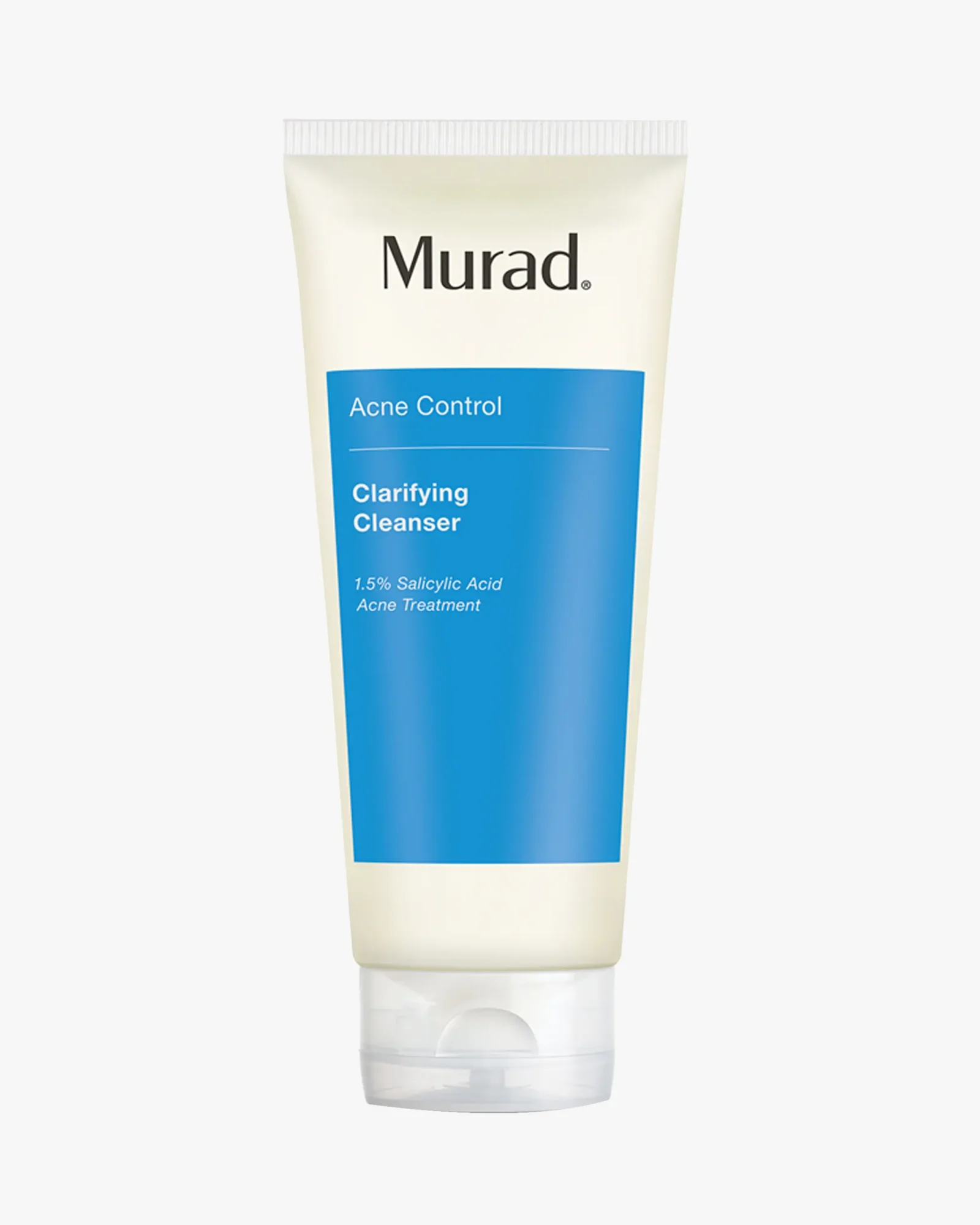
If your skin is both acne-prone and sensitive, higher concentrations of salicylic acid could be overdrying. In that case, a cleanser that contains lower concentrations (0.5 to 1 percent) of the ingredient is COSRX Salicylic Acid Daily Gentle Cleanser.
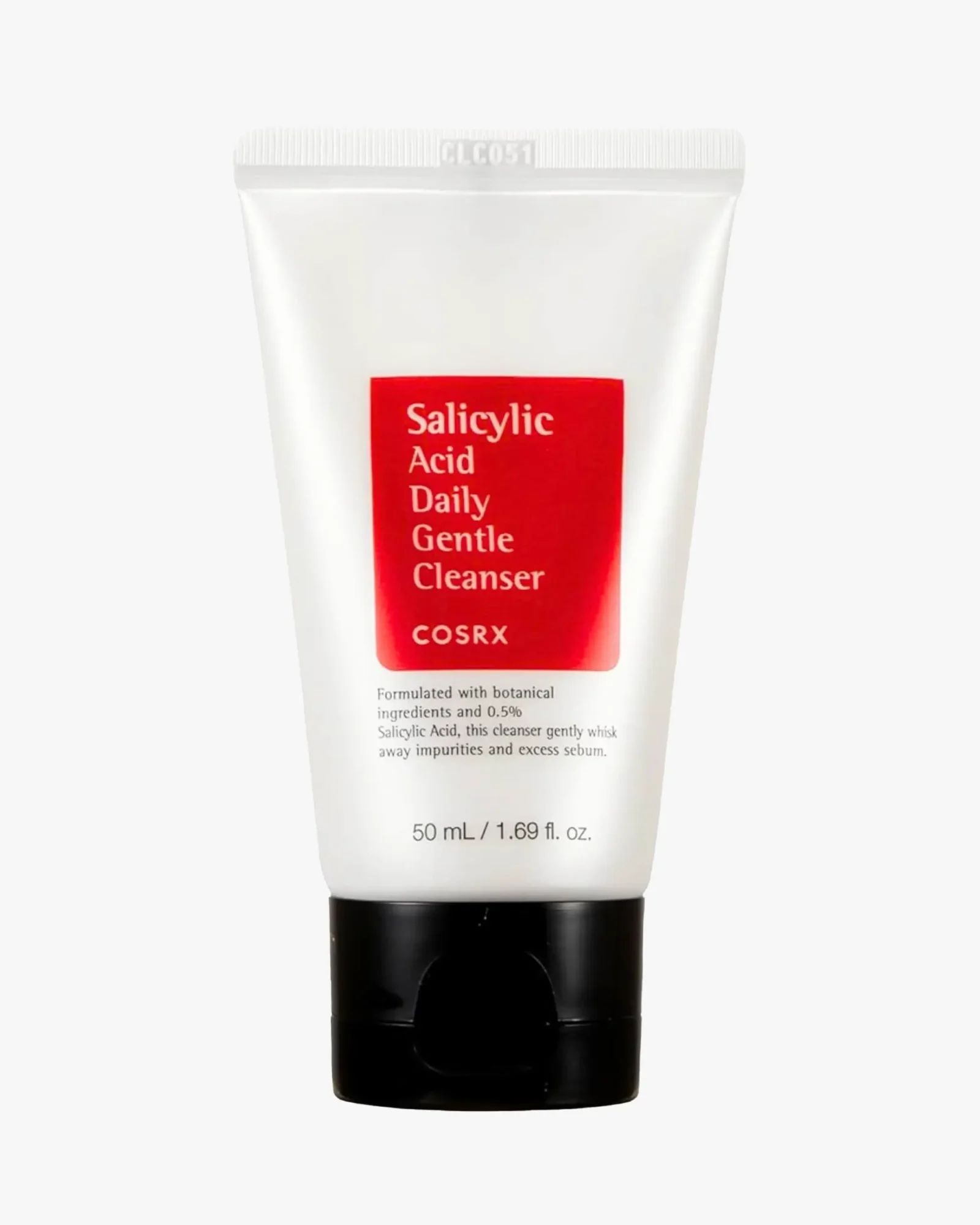
If your skin prefers it when you steer clear of salicylic acid overall, Dr. Jacobs likes the classic CeraVe Acne Foaming Cream Cleanser, which is formulated with 4 percent benzoyl peroxide, another acne-fighting ingredient. Jeannette Graf, MD, a board-certified dermatologist and assistant clinical professor of Dermatology at Mount Sinai School of Medicine, is a fan of the stronger PanOxyl Acne Foaming Wash, which contains 10% benzoyl peroxide. “It helps clear existing acne and prevent new acne from starting. It also contains moisturizers to prevent the skin from becoming too dry from use,” she says.
Dr. Zeichner says to apply your cleanser and let it sit while you sing the alphabet before rinsing it off. “The cleanser needs enough contact time with the skin for the active ingredients to exert their effects.”
Follow up with an oil-free moisturizer.
People who are prone to cystic acne should still use a facial moisturizer regularly in order to maintain a healthy skin barrier. “Patients who are prone to cystic breakouts should use oil-free, noncomedogenic moisturizers to hydrate their skin,” says Maryland-based board-certified dermatologist Ife Rodney, MD.
However, she notes that non-comedogenic products won’t necessarily treat your breakouts—they just won’t contribute to the problem. That said, choosing a moisturizer that contains ceramides, niacinamide, or hyaluronic acid can be especially helpful. “These ingredients help to reduce redness and inflammation and restore the skin’s protective barrier. This is important because many acne-fighting active ingredients tend to be drying and irritating to the skin.”
For a niacinamide-spiked option, Brendan Camp, MD, who is board-certified in both dermatology and dermatopathology and practices at MDCS Dermatology in New York City, suggests Paula’s Choice Clear Oil-Free Moisturizer.
Finish with a medicated spot treatment to kill the bacteria.
Benzoyl peroxide works by lowering levels of acne-causing bacteria on the skin, thereby reducing inflammation, which is why Dr. Zeichner recommends using the ingredient as a spot treatment. Skin-care products come in 2.5, 5, and up to 10 percent concentrations of benzoyl peroxide, but you don’t necessarily have to max out on it. “Studies have shown that even low concentrations of benzoyl peroxide are as effective as higher concentrations, but are associated with less dryness of the skin,” he says.
Dr. Zeichner recommends looking for leave-on acne spot treatments with 2.5 percent benzoyl peroxide, such as Paula’s Choice Clear Daily Skin Clearing Treatment. Dr. Camp suggests Neutrogena Rapid Clear Stubborn Acne Spot Treatment Gel, which kicks the active ingredient up to 10 percent. He advises his patients to leave the gel on overnight.
When all else fails, color-correct the cyst.
When your cystic acne persists despite your very best efforts, Dr. Nazarian recommends using makeup with a slight green tint to help mask redness and blend your pimple into your natural skin tone. Try Lancôme Idole All Over Full Coverage Concealer, applying a thin layer over the cyst before reaching for your concealer and foundation.

How long does cystic acne take to go away?
Any individual breakout may take between one and three weeks to heal, says Dr. Graf. As for cystic acne overall, it “may last months or years,” says Dr. Camp.
“Factors like age, hormonal changes, medications, skin-care routine, and overall health,” determine how long untreated cystic acne can go on, Camp says. There’s no countdown clock to the moment when skin stops breaking out. Though the nodules are often “most commonly associated with young people, especially teenagers who have fluctuating hormones, there are many women in their 30s who develop cystic acne for the first time, having never had teenage acne,” says Dr. Jacobs.
Waiting until your skin magically clears isn’t a risk that dermatologists want their patients to take. “I do not suggest waiting until it phases away, particularly because cystic acne can cause severe and permanent acne scarring,” says Dr. Farhang.
Acne scarring can be more challenging and expensive to treat than the acne itself—better not to scar in the first place than to have to treat a scar after the fact, right?—so as soon as you feel those telltale bumps under the skin, try to get right to your doctor.
You might also like
To provide a customized ad experience, we need to know if you are of legal age in your region.
By making a selection, you agree to our Terms & Conditions.

